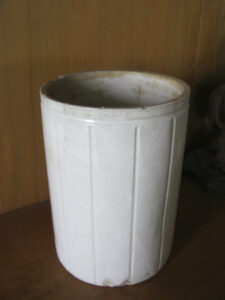
As Howick and districts count down to the 175th anniversary next year, the Times continues its series by Alan La Roche giving readers a glimpse of life as it used to be. The countdown began at the 170th in 2017
When the first Howick settlers arrived during the 1847-1850 period, they were amazed to hear a dawn chorus of tui and bellbirds with their bell-like call, but bellbirds died out due to disease in the 1860s.
British settlers missed comforting calls of thrush or blackbirds so the Howick Acclimatisation Society gathered £200 to import birds from “home”.
In 1867 a sparrow sold in Auckland for 10 shillings but they were soon the curse of grain farmers.
Captain Smith, of today’s Bell House, had a successful crop of potatoes destroyed by caterpillars. The arrival of thrushes and blackbirds the next year helped produce a good crop as they ate the caterpillars.
In 1821 Major Richard Cruise called at Motukorea-Browns Island and shot some red-billed seagulls and snipe for dinner. He was the first recorded European to visit this area. Mainland snipe are now extinct.
Kuaka [bar tailed godwits] and red knots gather on the Cockle Bay estuary in thousands before flying to Korea and on to Alaska to breed each March, to return in September.
In February-March they swoop over Point View ridges where farmers used shotguns before the birds were protected in 1941.
They were plucked and preserved in their fat in ceramic jars. Some Oyster Catchers feed on Howick beaches each winter after emigrating from the South Island to a warmer climate.
The shining cuckoo and long-tailed cuckoo arrive each spring and are heard but rarely seen. Kaka are occasionally seen in Howick coming from Maraetai or Waiheke.
Ohuiarangi-Pigeon Mountain was called Pigeon Mountain as kereru [native pigeons] fed on the abundant orange pigeon-wood berries and were shot by settlers. Their numbers have increased in recent times in Howick due to restoration of Mangemangeroa bush.
In 1853 Vicesimus Lush recorded that a new immigrant sold a skylark in Auckland for £5, that he had bought in England for five shillings and six pence. By 1900 skylarks were common in Howick Village with their melodious calls.
In 1930 on Fred Robert’s farm (now Saint Kentigern College) he used to throw a net over oat stacks on his farm awaiting threshing, to catch sparrows for sparrow pie during the Depression years.
Many Cockle Bay bach owners found Little Blue penguins nesting under the floorboards, growling and trumpeting leaving strong fish smells when they depart before dawn. They now nest on offshore islands.
Pheasants were introduced as a gamebird. In 1869 Prince Alfred, the Duke of Edinburgh, shot 44 pheasants on Bleak House Farm. Pheasants were a nuisance as they used to dig down to kumara tubers or potatoes leaving empty shells.
Endangered banded rails are common today on the Botany Town Centre carparks.
Many native birds continue to thrive in Howick such as tui, morepork, grey warblers, fantails, pukeko, wax-eyes as well as seagulls, black-backed gulls, shags and kingfishers at the beaches.
There has been an increase in eastern rosella parrots, welcome swallows, spur-winged plovers, spotted and barbary doves and feral pigeons in recent years. We rarely see spoonbills or white herons.
Howick is fortunate in having such a rich avian history.
- Alan La Roche MBE.
Howick Historian
alanlaroche@xtra.co.nz









